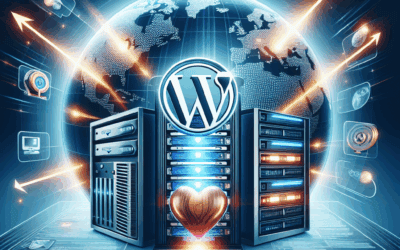Managing a website can often feel overwhelming, especially when you are trying to keep up with constant updates, security protocols, and performance optimization. However, by incorporating essential WordPress maintenance tasks into your routine, you can streamline your website management. In this article, we’ll outline the critical maintenance tasks that will help keep your WordPress site running smoothly, ensuring optimal performance and security.
Why Regular WordPress Maintenance is Crucial
When it comes to website management, regular maintenance is not just an option; it’s a necessity. Unattended websites can experience issues ranging from poor performance to security vulnerabilities. Regular maintenance helps:
- Maintain site speed and performance
- Enhance security and protect against threats
- Improve user experience and engagement
- Ensure compatibility with WordPress updates and plugins
Essential WordPress Maintenance Tasks
1. Regular Backups
One of the most critical tasks in WordPress maintenance is ensuring you regularly back up your site. Depending on the frequency of your updates and changes, you may want to schedule daily, weekly, or monthly backups. Use reliable backup solutions like UpdraftPlus or BackupBuddy to automate this task.
2. Update WordPress Core, Themes, and Plugins
WordPress frequently releases updates to its core software, themes, and plugins to fix bugs, add new features, or patch security vulnerabilities. Keeping everything up-to-date is essential for optimal site performance. You can set up automatic updates for minor releases, but always review major updates before installation to prevent compatibility issues.
3. Optimize Your Database
Over time, your WordPress database can become cluttered with unused data, such as post revisions and spam comments. Use plugins like WP-Optimize or WP-Sweep to clean up your database regularly. By optimizing your database, you can improve site speed and performance.
4. Monitor Site Speed and Performance
Page load speed has a direct impact on user experience and search engine rankings. Use tools like Google PageSpeed Insights or GTmetrix to monitor your site’s performance. Aim for a page loading time of under three seconds. You can improve speed by optimizing images, leveraging browser caching, and using Content Delivery Networks (CDNs).
5. Secure Your WordPress Site
Security should be a top priority for any website owner. Regularly update your security plugins, use strong passwords, and enable two-factor authentication. Install plugins like Wordfence or Sucuri Security to monitor for threats and vulnerabilities.
6. Review User Access and Permissions
For websites with multiple users, regularly reviewing user roles and permissions is essential. Ensure that team members only have access to the areas they need. Regularly remove any inactive or unnecessary user accounts to prevent unauthorized access.
7. Check for Broken Links
Broken links can negatively impact your site’s user experience and SEO. Use tools like Broken Link Checker to regularly scan your site for any broken links and update or remove them as needed.
8. Conduct Regular SEO Audits
Search engine optimization is a continuous effort. Regular SEO audits can help you identify issues or areas for improvement. Use tools like SEMrush or Ahrefs to analyze your site’s SEO performance and adjust your strategies accordingly.
9. Clean Up Media Library
An unorganized media library can slow down your site. Regularly review and delete any unused images or files. GPT image optimization plugins can help compress images without losing quality, further enhancing your site’s performance.
10. Monitor Uptime and Downtime
Keeping your site accessible is vital. Use monitoring services like UptimeRobot or Pingdom to track your website’s uptime and receive alerts if it goes down. This prompt action can help mitigate potential lost traffic or revenue.
Creating a WordPress Maintenance Plan
Establishing a structured WordPress maintenance plan can greatly reduce the stress of managing a website. Here’s how to create an effective plan:
- Set a Schedule: Decide on the frequency for each task (daily, weekly, monthly).
- Use a Checklist: Develop a checklist for all maintenance tasks to ensure consistency.
- Automate Where Possible: Utilize plugins to automate tasks like backups and updates.
- Document Changes: Keep track of updates and changes made during maintenance for future reference.
Conclusion
Streamlining your WordPress website management through these essential maintenance tasks will not only enhance site performance but also improve security and user experience. By investing time in regular backups, updates, and optimizations, you can ensure that your WordPress site remains a valuable asset to your business. Establishing a maintenance plan will simplify your responsibilities and allow you to focus on what truly matters: growing your brand and engaging with your audience. Remember, consistent maintenance is the key to a thriving online presence.
At USA Marketing Pros, we specialize in transforming your online presence with superior web design, SEO, and digital marketing solutions. Based in Arlington, VA, we proudly serve businesses across Northern Virginia and the greater Washington, DC area. Contact us today to see how we can help your business grow at (202) 888-5895 or visit us at 701 12th St S, Arlington, VA 22202.
Need Affordable WordPress Website Design? View our WordPress Web Design service.
Check out our WordPress Web Hosting Service
WordPress Web Hosting Strategy Call




0 Comments